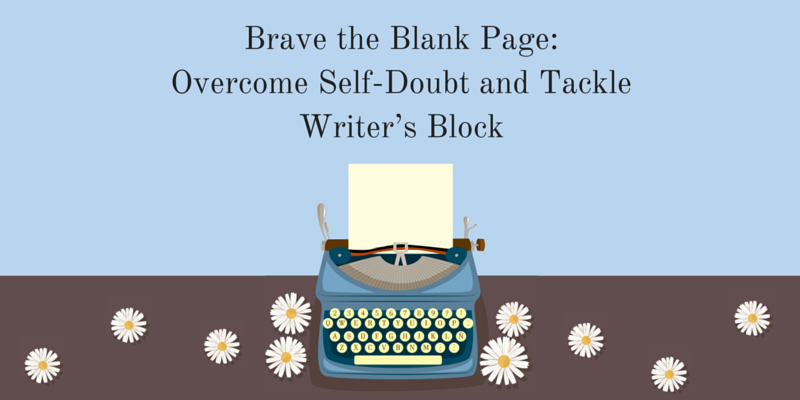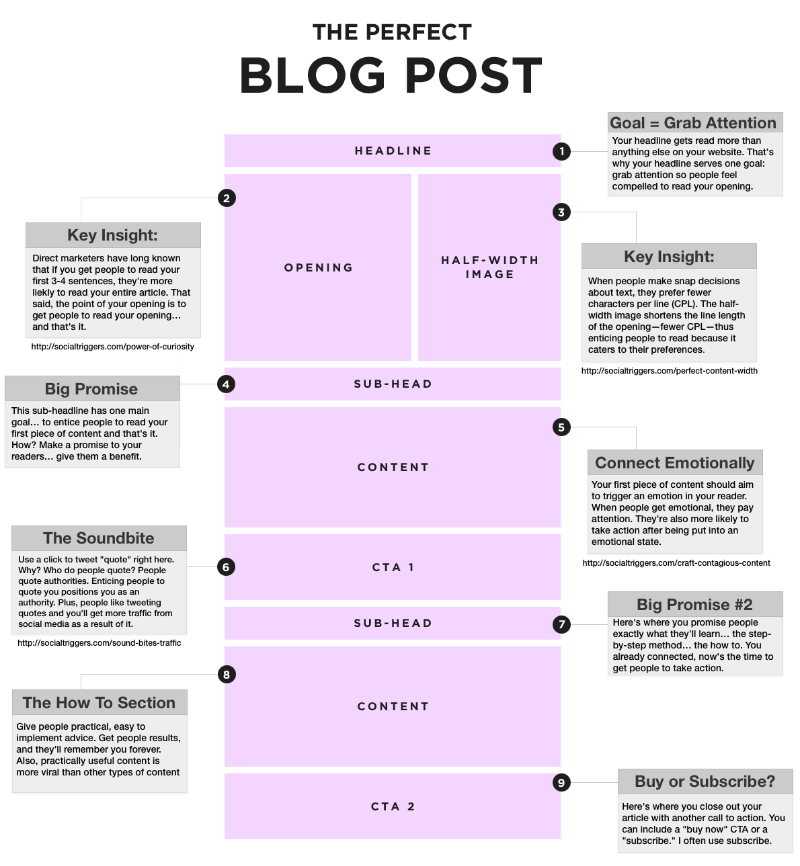Public speaking is the number one fear in America. This fear, known as glossophobia, affects 25% of the population. With these statistics, it’s no wonder why so many of us are plagued with doubt when we open up a notebook or blank document.
Whether writing blog posts, newsletters, or a book, your writing allows you to speak to the public on behalf of your company, employer, and yourself.
“Yeah, I know! That’s why I’m freaking out!”
Sometimes this responsibility can feel like the world is placed on your shoulders. You’re creating something that others will read and critique. Your words will be imprinted on the screens and in the minds of other people.
A lot of people don’t want to write because they don’t want their words (aka their thoughts and ideas) to be rejected. Or argued. Or mocked.
That fear of criticism can be a big deal if writing isn’t your cup of tea. It can be a big deal even if writing is your cup of tea.
Ultimately, this fear leads to self-doubt. And self-doubt is the root of writer’s block.
How can you get over your doubt, so that you can put your pen to paper and get your message out there?
Lucky for you, I have years of experience with doubt and writing. And with countless hours of practice and more self pep talks than I’d like to admit to, I’ve curated a list of tools and approaches I’ve used to overcome doubt, sharpen my writing skills, and overcome writer’s block once and for all.
#1. Own What You Know (Research What You Don’t)
If you don’t consider yourself an expert writer, take your cue from Mark Twain, who reportedly encouraged writers to “write what you know.” You’re not going to be an expert in everything, so play to your strengths.
Write on topics you’re familiar with. If something is entirely new to you, that’s cool too. Don’t get discouraged and drag yourself down before you even begin. Do a little digging and write based on your findings. Ask around. Ask Google. Use Quora. Support your information with statistics, studies, and expert quotations. There’s no shortage of information out there—don’t hesitate to fill your knowledge gaps with other sources.
When researching, remember that technology can be your friend if you use it wisely (see #5). Research is important, but curating too much online information can often prevent the creation of your content (i.e. sometimes looking up statistics and expert quotes on your topic can lead down a virtual rabbit hole of websites or YouTube videos).
Gather only what you need to answer specific questions or fill in any gaps in your writing—no more, no less. Then switch back into writing or airplane mode to eliminate distractions (i.e. watching dog videos on YouTube when you should be writing about overcoming self-doubt).
#2. Create a (Simple) Structure
Before you buckle down and write your heart out, you need to know what kind of writing you’re going to do. Get a good grasp of the audience, message, and medium (the “who,” “what,” and “how”) before you crank out that email or lengthy blog post. It’ll save you time in the long run and better resonate with your readers.
If you have trouble determining the “what,” try Steven Pressfield’s back-to-front method, which he claims “works for anything — novels, plays, new-business pitches, music albums, choreography.” Before you write, ask yourself where you want to end up. What’s your point? What do you want the reader to take from this? Starting at the finish line can help you to set up what you need to get to (and drive home) that end point.
Next, set yourself up for success with a detailed outline. Keep things simple and organized with sub-headers. Since you’ll be building off this outline, this step significantly simplifies the actual writing process and keeps things moving in the direction of your end point.
As you create your outline, keep in mind the audience you’re writing for and how you want to get your point across. What questions, struggles, or objections might they have? How can you address these in a helpful way?
[For more ideas on using templates, structures, and tools, click here.]
If your writing task is a work assignment, get an idea of your employer’s or client’s expectations and structure before you start. Not only is this a massive time- and energy-saver; it’ll also save your ego from a harsh critique because you were on different pages. Spending an hour on something only to hear that you “missed the mark” can cut down your self-confidence and diminish any desire to pursue future projects.
#3. Write Like You Speak
And I don’t mean write “um” or “like” or “y’know.” But do try to keep things casual and not too wordy. Including fancy, rarely used words or jargon will cause readers to lose interest pretty quickly. Speak like a human—not a robot—and toss in some light-hearted humor every now and then (when appropriate). It’s easy to connect with people who are relatable and put a smile on your face.
If you can, think of one person within that audience and write specifically for them. Or pretend the two of you are having a conversation. This can help you determine the “tone” of your writing and can be a great exercise for when you’ve got your message but aren’t sure how to communicate it.
If it helps, consider turning on the dictation feature on your computer to actually speak your messages into your document. Writing (or speaking) with a conversational tone is surprisingly effective, as it encourages a clear and personable writing style.
Want Help With Your Content Marketing?
 The 3 Pillars Guide Will Get You Focused on The Right Things - At The Right Time. Enter your email address to get it now
The 3 Pillars Guide Will Get You Focused on The Right Things - At The Right Time. Enter your email address to get it now
#4. Think in Multiple Drafts
Trying to get it right the first time puts a lot of pressure on yourself. Thinking about your writing in multiple drafts generally encourages a much smoother (and less stressful) writing process.
Let’s say you’re writing a 30,000 page ebook. You’ve got your points outlined into chapters and sub-headers and are ready to sit down to write. What’s going to be more productive: trying to write and edit simultaneously for the “perfect” book or getting your words down first and revising them later?
The consensus from writers is that the latter approach is key. Author, Shannon Hale, describes the process as gathering first and constructing second: “I’m writing a first draft and reminding myself that I’m simply shoveling sand into a box so that later I can build castles.” Don’t start shaping your castle while you’re still gathering sand.
#5. Embrace Technology
With the explosion of digital content that’s occurred over the past decade, more people are turning to their laptops than paper notebooks to write. Still, the blank page of Microsoft Word can feel as looming as any blank sheet of paper. Luckily, to keep up with the surge of online content, developers have created some pretty awesome resources for writers.
Writefull can help you to write more confidently by checking your text against language databases to see how many times and in what context it occurs.
If you’re constantly jumping back and forth from document to thesaurus for the longest, most “professional-sounding” words, I recommend EasyWrite. This app allows you to type up to 1,000 words and highlights any uncommon words you include. Hemingway App also helps to simplify and clarify your writing by highlighting errors, complex sentences, passive voice, and adverbs (which Hemingway advised against).
If you get caught up in editing as you write, challenge yourself with Flowstate. Self-proclaimed “The Most Dangerous App,” Flowstate helps writers maintain momentum by erasing everything if you stop typing after five seconds.
For big writing projects, most writers I know use Scrivener, which is a word processor and project management resource that helps you “create order from chaos.” With tools for every step of content creation (and the ability to set writing targets for accountability), Scrivener seems to be the all-in-one package for writers.
#6. Practice Makes Perfect Better
Whatever your tool of choice, the key to writing well is to write regularly. In the wise words of Maya Angelou, “Ain’t nothin’ to it, but to do it.” In writing, and in general, practice is the best way to overcome doubt. Whether writing something you know or exploring a new topic or style, write as much and as often as possible.
Consistent practice leads to growth, which is the best defense against “imposter syndrome”—that inner voice of doubt that tells you that you’re trying to be something you’re not. “You don’t know what you’re doing.” “What makes you think you stand a chance?” Sound familiar? Don’t listen to that little (or sometimes monstrous) voice. Write to crush it!
If you have a big writing project ahead, break it down into manageable chunks you can tackle regularly. That 30,000 page ebook can feel like Goliath. Intimidation invites procrastination, so why not start by writing 500 words a day? Do that consistently for two months, and you’ve hit your target!
Television Producer, Ira Glass, also believes that the key to creative confidence and growth lies in consistent practice: “The most important thing you can do is a lot of work. Put yourself on a deadline so that every week you will finish one story. It is only by going through a volume of work that you will close that gap [between your taste and your work], and your work will be as good as your ambitions.”
Practice doesn’t necessarily make you perfect, but it will definitely make you better.
Whatever your tool, audience, or message, writing gives you the power to connect people and ideas through words. While that may sound overwhelming, it’s also very exciting! You’re constantly making things happen through the power of the written word.
When you do face writer’s block, take a moment to ask yourself where the block is coming from. Do you need more information? Are you unsure of your message or audience? Do you doubt your skills or fear criticism?
Apply these tips wherever and whenever needed and see how your content and approach to writing change.
And know that you are not alone in this doubt. Author and Publisher, Jane Friedman, describes her 20+ years of writing as being rooted in uncertainty:
“The very nature of the art of writing incorporates uncertainty, experimentation, and a willingness to create art from the depths of who we are. Writing is a mentally challenging occupation, which requires more hard-core, cognitive expenditure than many other lines of work.”
Jane Friedman thinks you’re hard-core, and so do I.
Embrace the uncertainty by experimenting regularly, and watch your doubt (and writer’s block) shrink from a mountain to a molehill.
Takeaways:
1. Own What You Know (Research What You Don’t)
Overcome self-doubt by writing on topics you’re confident in and familiar with. And if you’re not an expert, start by delving into what’s already out there.
2. Create a (Simple) Structure
Know who you’re writing for, what your message is, and how you’ll get it across before you gear up to write. Once you’re ready, begin with an outline and build from there.
3. Write Like You Speak
Keep things simple and conversational. Use dictation software on your computer to encourage a personable writing style.
4. Think in Multiple Drafts
It’s hard to get anything right the first time. Break down big projects into smaller chunks. Always write first and edit later.
5. Embrace Technology
There are a number of creative apps and resources out there to enhance your confidence as a writer. Get creative and embrace the one that works for you!
6. Practice Makes Perfect Better
The best way to overcome doubt is with regular practice. Write as often as possible in a number of different niches or styles to grow and gain confidence.
Ask yourself what causes you to doubt your writing skills. How can you put these six tips to the test? What else can you do to boost your confidence as a writer? Start practicing now by leaving a comment below about what works for you!






